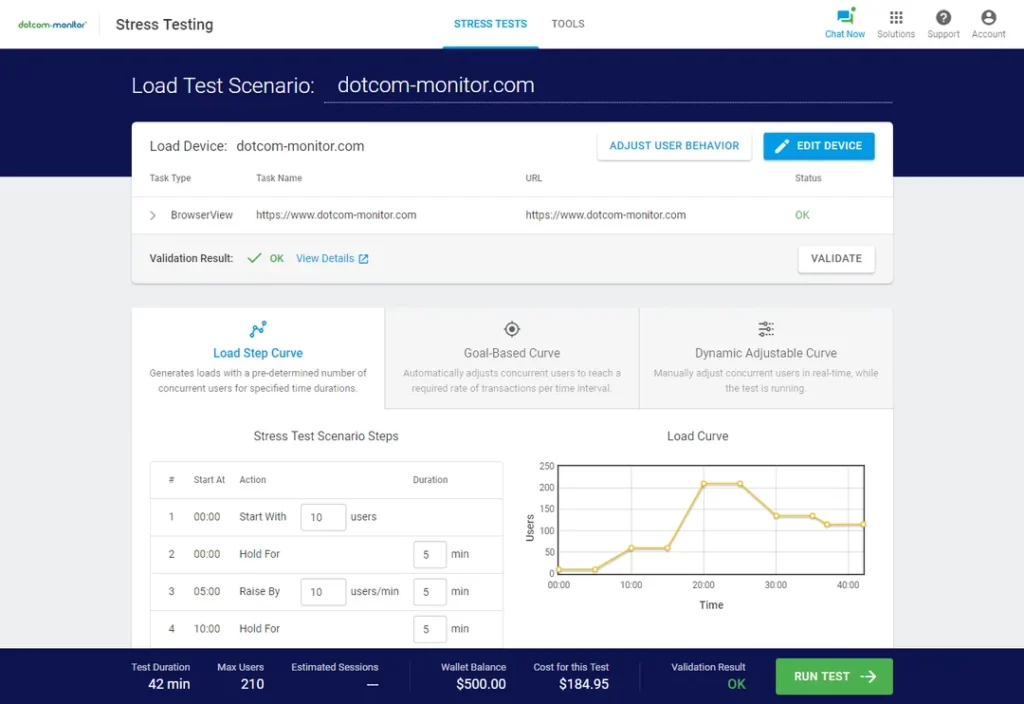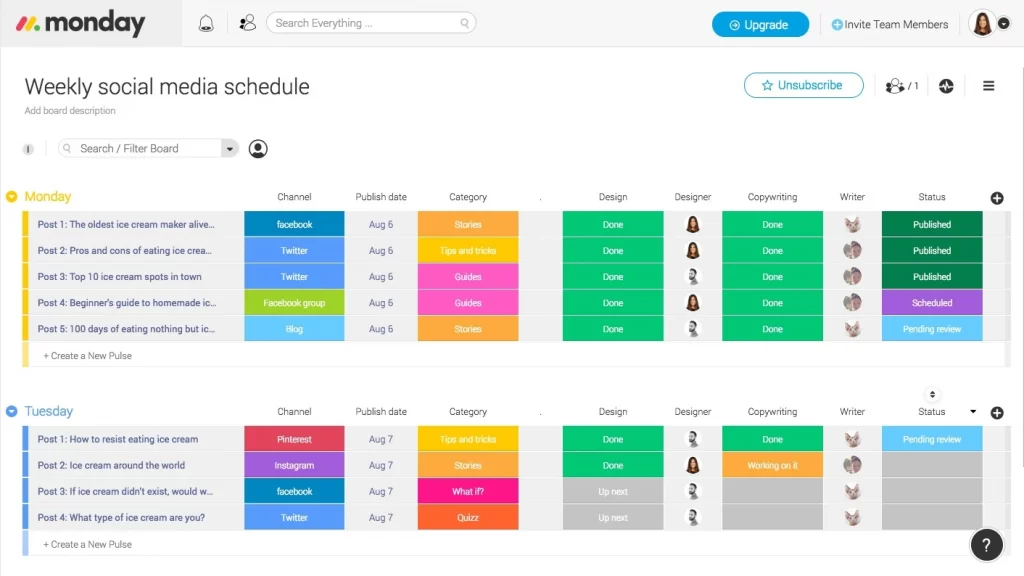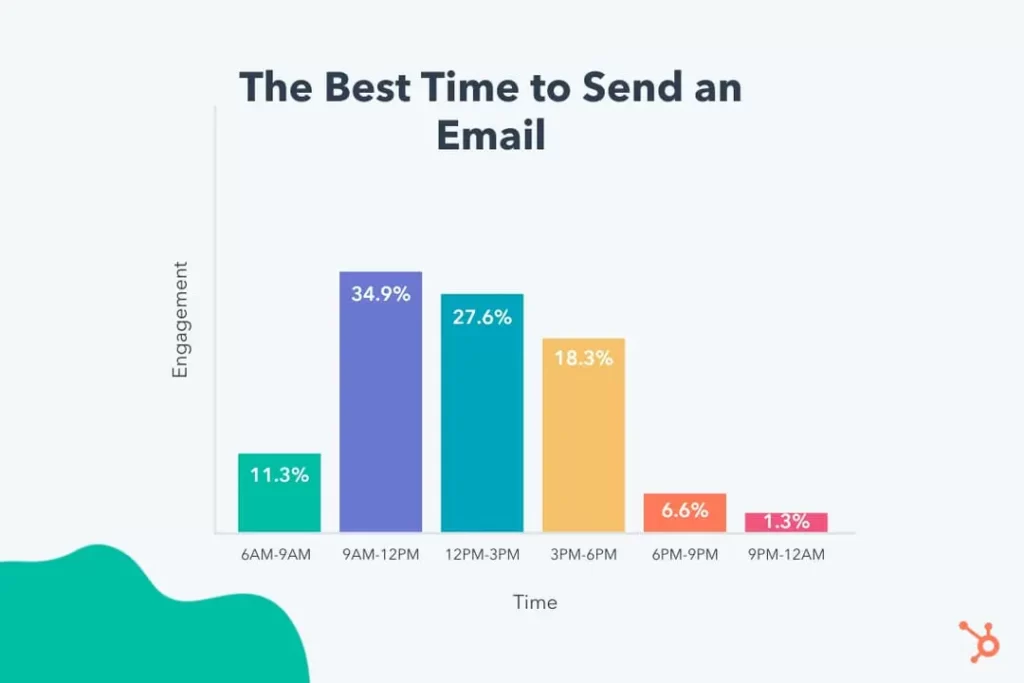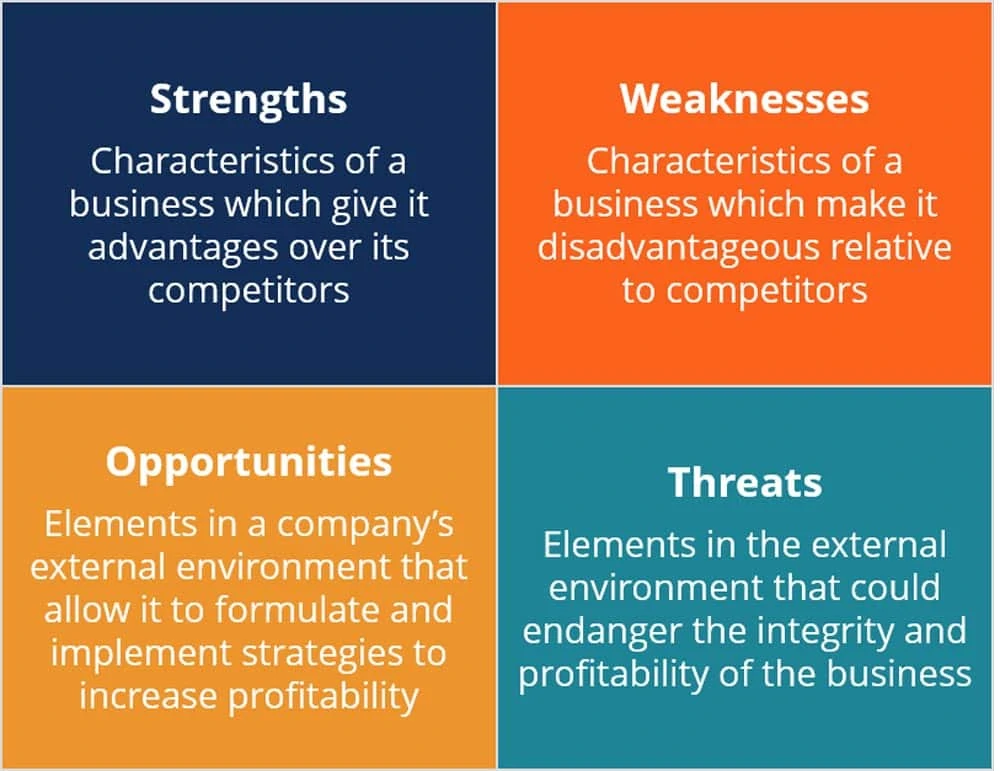How to Conduct a Digital Marketing Audit for Your Business
Do you ever feel like you're spinning your wheels regarding digital marketing? No matter how much time, effort, and money you invest, you're not getting the desired results. Well, my friend, it's time to hit the brakes and take a good, hard look at your online marketing strategy.
I will walk you through the ins and outs of conducting a digital marketing audit for your business.
By the end of this article, you'll be armed with the knowledge, tools, and tips you need to analyse your marketing efforts, identify areas for improvement, and boost your online presence like never before. Are you ready to become a digital marketing powerhouse? Let's dive in!
Table of Contents
Why You Need a Digital Marketing Audit

As businesses rely on digital channels to reach their target audience, a digital marketing audit becomes essential to ensure their marketing efforts meet their goals. The audit thoroughly examines a company's online marketing tactics, including social media, email marketing, search engine optimisation, and content marketing.
One of the primary reasons why you need a digital marketing audit is to evaluate the effectiveness of your marketing channels and campaigns. The audit helps you determine which channels drive the most traffic to your website, generate leads and conversions, and deliver the highest return on investment (ROI). By identifying the strengths and weaknesses of your marketing efforts, you can allocate your resources more effectively and focus on the areas most likely to generate results.
Another reason why a digital marketing audit is essential is to identify areas where you can optimise your marketing efforts. This includes analysing the performance of your website, social media platforms, email campaigns, and other digital marketing strategies to determine where improvements can be made. You can fine-tune your marketing efforts and improve their impact by identifying areas for optimisation.
A digital marketing audit also helps you make informed decisions about your marketing strategy and budget allocation. By examining the data and metrics associated with your marketing efforts, you can determine which methods are working and which are not. This information can guide your decisions about which tactics to prioritise and which to eliminate from your marketing plan. Additionally, you can make more informed decisions about allocating your budget for maximum impact and ROI.
Finally, a digital marketing audit is critical to staying competitive in the ever-evolving digital landscape. As technology and consumer behaviour change, businesses must adapt their marketing strategies to remain relevant and effective. By conducting regular audits of your marketing efforts, you can stay on top of industry trends, best practices, and emerging opportunities, ensuring that you remain competitive in the marketplace.
Components of a Digital Marketing Audit
A comprehensive digital marketing audit consists of several components that analyse various aspects of your online marketing efforts. These include:
Website Audit

A website audit comprehensively evaluates your website's performance, usability, and SEO. It helps identify issues affecting your website's ranking on search engines, user experience, and overall performance. Here are some key elements that should be considered during a website audit:
- Website speed and performance: The loading speed of your website plays a significant role in user experience and search engine ranking. A website audit should evaluate the swiftness of your website and identify areas where improvements can be made to enhance performance.
- Mobile-friendliness and responsive design: As more people access the internet using mobile devices, having a mobile-friendly website is crucial. A website audit should examine the responsiveness of your website across various devices and identify areas where improvements can be made.
- User experience and navigation: User experience (UX) is a critical factor in the success of your website. During a website audit, UX and navigation should be evaluated to identify areas where improvements can be made to provide a better user experience.
- On-page SEO: On-page SEO elements, such as title tags, meta descriptions, heading tags, and content, are essential for search engine ranking. A website audit should examine these elements to ensure they are optimised and aligned with your SEO strategy.
- Off-page SEO: Off-page SEO elements, such as backlinks and domain authority, are also crucial for ranking engines. A website audit should evaluate the quality and quantity of backlinks and identify areas where improvements can be made to enhance your website's authority and reputation.
- Content: Content is crucial in driving traffic and engagement on your website. A website audit should evaluate the quality and relevance of your content, ensuring it is aligned with your target audience and optimised for search engines.
- Security: With the increasing threat of cyber attacks, website security is crucial. A website audit should evaluate the safety of your website, identify potential vulnerabilities, and recommend measures to enhance security.
- Analytics: Website analytics provide valuable insights into user behaviour and website performance. A website audit should evaluate your analytics setup and configuration, ensuring you can access accurate data to make informed decisions.
Content Audit

A content audit is essential for any business to evaluate its website's content's quality, relevance, and performance. Here are some key factors to consider during a content audit:
- Content relevance and quality: The relevance and quality of your content play a crucial role in engaging your audience and driving traffic to your website. During a content audit, you should evaluate your content's relevance to your target audience, accuracy, and overall quality.
- Keyword usage and optimisation: Keywords are essential for search engine optimisation (SEO) and help drive traffic to your website. During a content audit, you should evaluate how effectively your content uses keywords, ensuring they are relevant to your audience and aligned with your SEO strategy.
- Content engagement: Engaging content keeps visitors on your website longer and encourages them to return. During a content audit, you should evaluate your content's engagement metrics, such as time spent on a page, bounce rate, and click-through rate, to identify areas where improvements can be made.
- Content sharing and social media performance: Social media is a powerful tool for content promotion and can drive significant traffic to your website. During a content audit, you should evaluate how effectively your content is being shared on social media and its overall performance, such as likes, comments, and shares.
- Content gaps and opportunities: A content audit should also identify gaps and opportunities for new content. This includes identifying topics relevant to your target audience but has yet to be covered on your website and determining existing content that can be updated or repurposed.
- Content organisation and structure: The organisation and configuration of your content can affect its usability and engagement. During a content audit, you should evaluate how effectively your content is organised and structured, ensuring it is easy to navigate and understand.
- Content format and media: The structure and media of your content can affect its engagement and appeal. During a content audit, you should evaluate how effectively your content uses various forms, such as videos, infographics, and podcasts, to engage your audience.
- Content goals and metrics: Your content should be aligned with your business goals, and metrics should be in place to measure its effectiveness. During a content audit, you should evaluate how effectively your content supports your business goals and the metrics used to measure its performance.
Social Media Audit

A social media audit is a critical process that helps businesses evaluate their presence, performance, and engagement across various platforms. Here are some key factors to consider during a social media audit:
- Profile optimisation: A well-optimised social media profile helps establish your brand identity and attract new followers. During a social media audit, you should evaluate your profile's branding, bio, links, and other elements to ensure they are optimised for success.
- Follower count and growth: The number of followers on your social media platforms is crucial for measuring your success. During a social media audit, you should evaluate your follower count and growth rate, identifying areas where improvements can be made.
- Engagement rates: Engagement rates are crucial for measuring how effectively your social media content engages your audience. You should evaluate your engagement rates, including likes, comments, shares, and other metrics, during a social media audit.
- Content strategy and performance: Content strategy is crucial for attracting and engaging your social media audience. During a social media audit, you should evaluate your content strategy and implementation, including the types of content you post, the frequency of posting, and the performance of each post.
- Platform-specific metrics: Each social media platform has unique metrics that can be used to evaluate your social media success. During a social media audit, you should assess platform-specific metrics, such as retweets on Twitter, hashtags on Instagram, and pins on Pinterest, among others.
- Audience demographics: Understanding your social media audience demographics can help you tailor your content and engagement strategies. During a social media audit, you should evaluate your audience demographics, including age, gender, location, and interests, among other factors.
- Competitor analysis: A competitor analysis can provide valuable insights into how your competitors are using social media and how you can differentiate yourself. During a social media audit, you should evaluate your competitors' social media presence, including their follower count, engagement rates, and content strategy.
- Social media advertising: Social media advertising can be a powerful tool for reaching new audiences and driving engagement. You should evaluate your advertising efforts during a social media audit, including your budget, targeting strategies, and performance metrics.
Email Marketing Audit

An email marketing audit is an essential process that helps businesses evaluate the effectiveness of their email campaigns. Here are some key factors to consider during an email marketing audit:
- Email list health: The health of your email list is crucial for ensuring your emails reach your target audience. During an email marketing audit, you should evaluate the bounce rates, unsubscribe rates, and other metrics that indicate the health of your email list.
- Email design and responsiveness: The design and responsiveness of your email templates can affect their readability and engagement. During an email marketing audit, you should evaluate the design and responsiveness of your email templates, ensuring they are optimised for various devices and email clients.
- Subject lines and preview text: Subject lines and preview text are crucial for encouraging recipients to open your emails. During an email marketing audit, you should evaluate the effectiveness of your subject lines and preview text, ensuring they are compelling, relevant, and aligned with your email content.
- Segmentation and personalisation strategies: Segmentation and personalisation strategies can help you target your email campaigns more effectively and improve engagement rates. During an email marketing audit, you should evaluate your segmentation and personalisation strategies, identifying areas where improvements can be made.
- Open rates: Open rates are a crucial metric for measuring the effectiveness of your email campaigns. During an email marketing audit, you should evaluate your open rates, identifying factors affecting them, such as the time or day of the week you send your emails.
- Click-through rates: Click-through rates are a critical metric for measuring how effectively your email content engages your audience. During an email marketing audit, you should evaluate your click-through rates, identifying factors that may affect them, such as the relevance and clarity of your call-to-action.
- Conversion rates: Conversion rates are the ultimate metric for measuring the success of your email campaigns. During an email marketing audit, you should evaluate your conversion rates, identifying areas where improvements can be made, such as the effectiveness of your landing pages.
- Automation and drip campaigns: Automation and drip campaigns can help you nurture leads and move them through the sales funnel. During an email marketing audit, you should evaluate your automation and drip campaigns, identifying areas where improvements can be made, such as the timing and relevance of your messages.
Paid Advertising Audit

A paid advertising audit is a necessary process for businesses that want to evaluate the effectiveness of their paid marketing efforts. Here are some key metrics to analyse during a paid advertising audit:
- Return on ad spend (ROAS): ROAS is a critical metric for measuring the effectiveness of your paid advertising campaigns. During a paid advertising audit, you should evaluate your ROAS, identifying areas where improvements can be made.
- Click-through rates (CTR): CTR is a metric that measures the percentage of people who click on your ads after seeing them. During a paid advertising audit, you should evaluate your CTR, identifying factors affecting it, such as ad placement, targeting, or ad copy.
- Cost per click (CPC): CPC is the amount you pay for each click on your ads. During a paid advertising audit, you should evaluate your CPC, identifying areas where you may be able to reduce your costs while maintaining or improving your results.
- Conversion rates: Conversion rates measure the percentage of people who take a specific action after clicking on your ads, such as purchasing or filling out a form. During a paid advertising audit, you should evaluate your conversion rates, identifying factors that may be affecting them, such as the relevance and clarity of your landing pages or the targeting of your ads.
- Ad targeting: Ad targeting is crucial for reaching the right audience with your paid advertising campaigns. During a paid advertising audit, you should evaluate your ad targeting, identifying areas where you can refine your targeting to reach more qualified leads.
- Ad copy and design: Ad copy and design can affect the effectiveness of your paid advertising campaigns. During a paid advertising audit, you should evaluate your ad copy and design, identifying areas where improvements can be made to make your ads more compelling and engaging.
- Ad placement: Ad placement can affect the visibility and engagement of your paid advertising campaigns. During a paid advertising audit, you should evaluate your ad placement, identifying areas where changes may be needed to increase visibility and engagement.
- Ad scheduling: Ad scheduling can affect the effectiveness of your paid advertising campaigns. During a paid advertising audit, you should evaluate your ad scheduling, identifying areas where changes may be needed to ensure your ads reach your target audience at the right time.
Conducting Your Digital Marketing Audit

Now that we've covered the key components of a digital marketing audit let's dive into the process of conducting one for your business.
Step 1: Set Clear Goals and Objectives
Setting clear and specific goals and objectives is crucial to conduct an effective digital marketing audit. Your goals will guide the entire process and help you focus on the areas of your digital marketing strategy that matter most to your business.
When setting your goals, consider what you want to achieve with your digital marketing efforts. Are you looking to increase brand awareness, drive more traffic to your website, improve conversion rates, or boost sales? It is essential to be specific and measurable with your goals so that you can accurately track your progress and determine the success of your audit.
Once you have established your goals, you can tailor your audit to address the areas of your digital marketing strategy that align with your objectives. For example, if your goal is to increase website traffic, you should focus on your website's SEO, content marketing, and social media strategy.
Setting clear goals and objectives for your digital marketing audit ensures that your efforts are focused, measurable, and effective. Your goals will help you identify the areas of your strategy that require improvement, allowing you to develop a comprehensive plan for enhancing your digital marketing performance and achieving your business objectives.
- Audible Audiobook
- Josh Nelson (Author) – Mark Karten (Narrator)
- English (Publication Language)
- 03/11/2020 (Publication Date) – Seven Figure Agency (Publisher)
Step 2: Gather Data and Analyse Performance
Conducting a thorough digital marketing audit requires gathering and analysing data from various sources to understand your current digital marketing performance comprehensively. You should collect data from different platforms, including Google Analytics, social media insights, email marketing reports, and advertising platforms.
Once you have collected the data, you should analyse it carefully to identify trends, patterns, and areas of opportunity. For instance, you should examine your website's traffic sources, bounce, and conversion rates to determine whether your SEO strategy works effectively. Look at your social media engagement rates, follower growth, and post reach to assess the effectiveness of your social media marketing strategy.
By analysing the data, you can identify areas of improvement, such as opportunities to optimise your website's user experience, improve your content marketing strategy, or enhance your email marketing campaigns. You may also uncover insights into your target audience, such as their demographics, interests, and behaviour, which can inform your future marketing efforts.
To make the most of your digital marketing audit, gathering as much relevant data as possible and analysing it thoroughly is essential. This will help you identify the strengths and weaknesses of your digital marketing strategy and develop actionable recommendations to improve your performance and achieve your business goals.
Step 3: Identify Strengths and Weaknesses

During the data analysis phase of your digital marketing audit, it's crucial to pay attention to the strengths and weaknesses of your marketing efforts. By identifying what's working well and what's falling short, you can pinpoint areas for improvement and develop a plan to enhance your overall digital marketing performance.
When assessing your marketing efforts' strengths, look for positive trends and patterns in your data. For example, you may find that your social media campaigns are generating high engagement rates or that your email marketing campaigns are driving a high volume of conversions. These strengths can help guide your future marketing efforts, allowing you to build on what's already working well and achieve even better results.
At the same time, it's equally essential to identify the weaknesses in your digital marketing strategy. Look for areas where you must catch up to your goals, such as low website traffic, poor social media engagement, or low email open rates. You can develop a plan to address these issues and improve your overall marketing performance by identifying them.
It's also important to note any glaring issues requiring immediate attention. For instance, if you notice a significant drop in website traffic or a sudden decrease in social media engagement, you may need to investigate the cause and implement corrective measures quickly.
By taking note of your marketing efforts' strengths and weaknesses, you can focus your improvement efforts on the areas that will significantly impact your digital marketing performance. This approach allows you to optimise your resources and achieve better results in less time, ultimately driving more traffic, generating more leads, and increasing your bottom line.
- Gildner, Gil (Author)
- English (Publication Language)
- 205 Pages – 03/28/2019 (Publication Date) – Baltika Press (Publisher)
Step 4: Benchmark Against Competitors
When conducting a digital marketing audit, evaluating your performance in the context of your competitors is essential. Analysing your competitors' marketing efforts can provide valuable insights into their strategies and tactics and help you identify areas where you might fall behind or excel. This information can be used to develop new opportunities and techniques that will help you stay competitive.
To begin analysing your competitors' marketing efforts, identify your market competitors. This may involve researching your industry, conducting surveys, or using social media monitoring tools to track your competitors' online activities.
Once you have identified your competitors, you can begin to analyse their digital marketing strategies. Look at their website design, content marketing, social media presence, email marketing campaigns, and advertising efforts. Consider what they're doing well and where you might be lagging.
For example, you may discover that your competitor's website has a more user-friendly design and offers more engaging content than your own. Or they have a more active social media presence and successfully engage with their audience. You can develop new strategies to enhance your digital marketing performance by identifying these areas.
Additionally, analysing your competitors' marketing efforts can help you identify new opportunities to differentiate yourself in the marketplace. You may discover that your competitors must be more effectively targeting a particular audience segment or are missing out on a specific marketing channel. By recognising these opportunities, you can develop new strategies to capitalise on them and gain a competitive advantage.
In summary, analysing your competitors' digital marketing efforts can provide valuable insights into their strategies and tactics and new opportunities for your business to stay competitive. By staying informed and continually evaluating your marketing performance, you can make strategic decisions that will drive growth and success for your business.
Step 5: Develop an Action Plan
After conducting a thorough digital marketing audit and identifying areas for improvement, the next step is to develop an action plan that outlines the steps you will take to optimise your digital marketing efforts. This action plan should be detailed and include the following components:
- A prioritised list of improvement areas: Start by creating a list of the areas that require the most attention and prioritise them based on their potential impact on your business goals. For example, if your website's loading speed could be faster, it may take priority over less critical improvements, such as optimising social media posts.
- Specific actions for each improvement area: Once you have identified them, outline steps you will take to address them. For instance, if your website has a slow loading speed, you may need to compress image sizes, reduce page elements, or optimise your web hosting.
- Timelines and deadlines for implementing changes: Set realistic timelines and deadlines for implementing each action item in your plan. This will help ensure that progress is made and improvements are implemented on time. Remember to consider the time and resources needed for each action item.
- Responsible team members or departments: Assign team members or departments responsible for implementing each action item. This will help ensure accountability and streamline the implementation process.
- Metrics to track success and progress: Define metrics to track the success and progress of each action item. This will help you measure the effectiveness of your improvements and adjust your strategy as needed.
Creating a detailed action plan can streamline the implementation process, ensure all team members are on the same page, and measure your progress over time. This plan will also help you stay focused on your goals and maintain momentum as you work towards improving your digital marketing performance.
- Kingsnorth, Simon (Author)
- English (Publication Language)
- 416 Pages – 05/31/2022 (Publication Date) – Kogan Page (Publisher)
Step 6: Implement Changes and Monitor Progress
Once you have created an action plan for optimising your digital marketing efforts, it's time to implement the necessary changes. The success of your plan will depend on your ability to execute it effectively, monitor your progress, and make adjustments as needed. Here are some tips for ensuring a successful implementation:
- Prioritise action items: Start with the highest-priority action items on your list and work your way down. This will help you focus on the areas that will significantly impact your business goals.
- Assign tasks to team members: Assign tasks to team members responsible for implementing each action item. Ensure that everyone understands their roles and responsibilities, and monitor progress regularly to ensure that all tasks are completed on time.
- Track metrics and progress: Monitor relevant metrics and progress regularly to assess the success of your improvements. For example, if you optimise your website for SEO, track changes in organic search traffic, bounce, and conversion rates. Use this data to make necessary adjustments to your plan and ensure you're on track to meet your goals.
- Make adjustments as needed: Be prepared to adjust your plan as needed. Monitor your progress, and if you do not see the results you expected, consider revising your plan or changing your tactics.
- Celebrate successes: Celebrate your successes along the way. Recognise and reward team members for their hard work and accomplishments, and use your successes to motivate and inspire your team to continue pushing forward.
In summary, implementing an action plan for optimising digital marketing requires focus, diligence, and flexibility. Monitor your progress regularly, track relevant metrics, and be prepared to make adjustments as needed. With the right mindset and approach, you can achieve your digital marketing goals and drive growth and success for your business.
Conclusion
A digital marketing audit is invaluable for businesses looking to optimise their online marketing efforts. By conducting a comprehensive audit, you can gain insights into the performance of your marketing channels, identify areas for improvement, and develop an actionable plan to boost your digital marketing success. Regular audits and continuous improvement allow your business to stay competitive in the ever-evolving digital landscape.
Last update on 2024-05-17 / Affiliate links / Images from Amazon Product Advertising API



